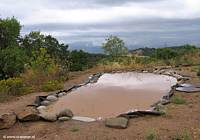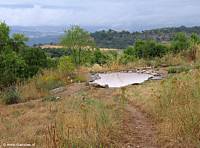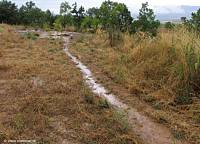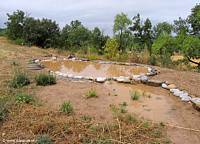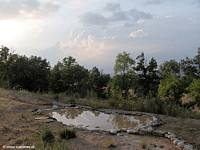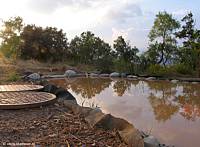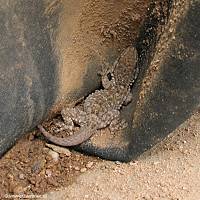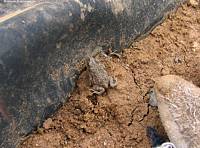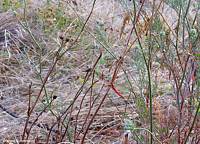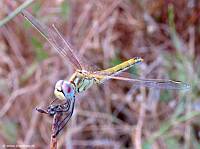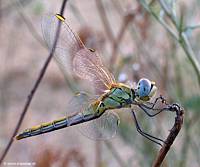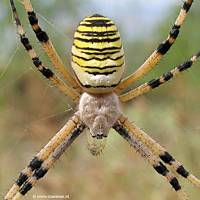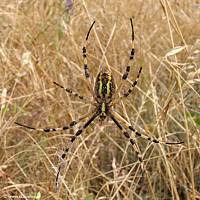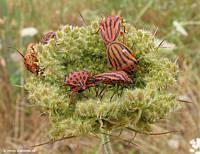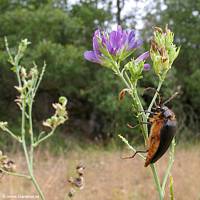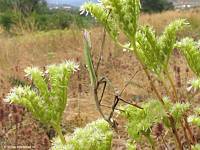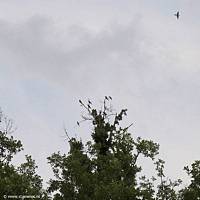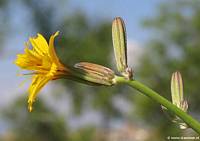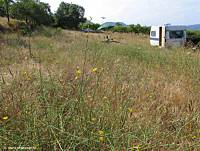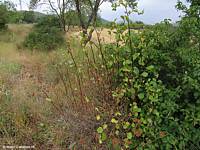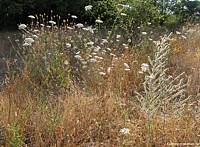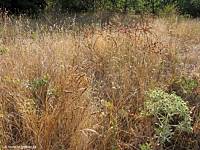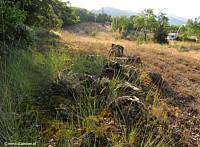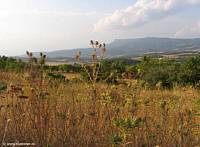|
|
Nature
Switched On
|
|
|
introduction |
2007 July 21 & 22, Saturday & Sunday
The amount of rainfall for these days was about 11 litre/m2 at an official meteorological station 22 km from the terrain, but I think the local amount must have been at least the double, estimating from a completely full bucket next to the caravan (unfortunately my private rain gauge had been stolen by some body or beast) . |
Looking south-east. |
|
Looking south-east. Saturday 14:28 |
||
|
Still raining and the water actually streaming
downhill in the canal. |
The puddle at the foreground would disappear in a couple of
hours. |
|
|
In the afternoon it stopped raining and the sun started to shine, increasing the temperature from 17º to 27ºC in a couple of hours. This gave me opportunities for taking photographs of some mirror images of the water surface. One of the mayor attractions of a pond is just this: a beautiful smooth surface reflecting the surrounding landscape.
|
||
|
Looking north. |
Some Setaria grasses
sticking out of the water. Looking north. Saturday 20:29 |
|
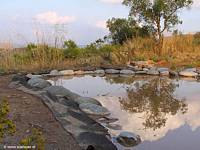 |
The mirror effect suppresses the
brown colour of the water. Looking south-east. Saturday 20:31 |
|
|
Less aesthetic is the border with the black liner sticking out. I am
going to cut it back (up to 2 cm from the ground) but first I want
to be sure that the pond is fully settled and level, with the
correct in- and outflow of water. Nevertheless, ecologically this
out-sticking liner has its merits. Weeks ago we saw an Ocellated
Lizard and a fat toad under the liner and this weekend we surprised
a gecko and a small toad. In the water I detected some fast diving beetles, which perhaps are Water scavenger beetles. That could be interesting because these beetles can be voracious consumers of mosquito larvae which have caused me some worry in this pond of stationary water.
|
||
|
This small Crocodile gecko (Tarentola
mauritanica, Western Mediterranean) was hiding under the
liner. |
||
|
An even smaller toad next to a
finger of a glove. |
||
|
Coincidence or not, but this weekend I spotted some beautiful dragonflies. I think they are Vagrant Darters (Sympetrum vulgatum), called vagrant because they tend to migrate from southern to northern countries.
|
||
|
Male and female Vagrant darter matching the
colour palette of Wild carrots. |
Female Vagrant darter. Saturday 20:55 |
|
|
Female Vagrant darter. |
Male Vagrant darter. Sunday 10:22 |
|
|
|
||
|
With a body length of more than
15 mm, an impressive Wasp spider. Sunday 17:04 |
||
|
The underside of a Wasp spider. On the lower
left the typical zigzag pattern of some threads. |
||
|
The rain had cleaned up everything and animated both insect and plant life (or perhaps only the photographer).
|
||
|
(Not so) private affairs of some Graphosoma
lineatum couples. Typical visitors of Umbelliferae
like the Wild carrot. |
||
|
Unknown beetle on
Alfalfa (Medicago
sativa). Sunday 10:48
|
||
|
Unknown beetle on a flowering Eryngium
campestre. |
 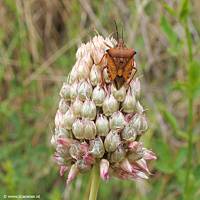 |
Another Shield bug:
Carpocoris mediterraneus on the fruit of Allium
sphaerocephalon. Sunday 12:37 |
|
The mantis (Empusa pennata) is a fascinating creature and always nice to capture in one of its acrobatic stands. In this case in some flowers of Pale stonecrop (Sedum sediforme) which little by little is terminating its flower cycle.
Equally fascinating, but much more difficult to capture, are the European Bee-eaters (Merops apiaster) which were constantly flying over the terrain. |
||
|
A mantis on Sedum sediforme. |
||
|
A group of Bee-eaters in the top
of a Quercus faginea tree. Highest terrace, looking west. Sunday 16:49 |
||
|
Apart from the omnipresent Wild carrots (Daucus carota) the vegetation of the central and western terraces is now dominated by Rush Skeletonweed (Chondrilla juncea). The flowers only open up with sunshine and are small but the plants has also very small narrow leaves that whither and disappear quickly so the overall effect is more yellow than you would expect.
|
||
|
Close-up of Chondrilla juncea. |
A field of Chondrilla
juncea. Looking north-west towards the entrance of the terrain. Saturday 18:11 |
|
|
Not everything is doing fine and flowering.
|
||
|
This Lonicera etrusca
was going very strong in spring but then some disaster struck. Central lower terrace, looking north-west. Sunday 12:21 |
||
|
But the general aspect of the terrain is still marvellous for the eye that appreciates the subtleties of textures, shades, forms and contrasts.
|
||
|
Highest western terrace, looking west. Saturday 18:29 |
Highest western terrace, looking
west. Saturday 18:32 |
|
|
Nice contrast between the green wood border and the dry
field. Higher central terrace, looking north-west. Saturday 19:53 |
Carthamus lanatus on the higher central terrace, looking
north. Saturday 20:03 |
|
|
introduction
|
|
